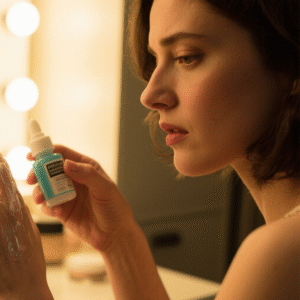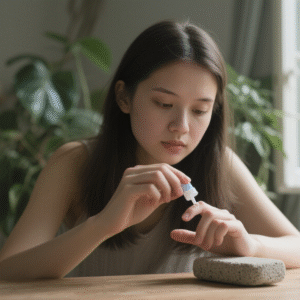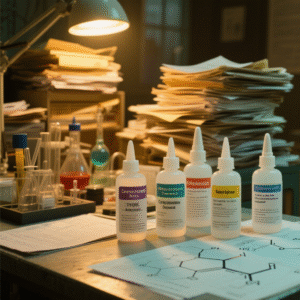How to Remove Super Glue from Fingers: Safe and Effective Methods
June 4, 2025 • by XZ Chemical
How to Remove Super Glue from Fingers: Safe and Effective Methods
We’ve all experienced that moment of panic when super glue bonds our fingers together. The good news is there are several household solutions that work effectively without damaging your skin.
To remove super glue from fingers, soak the affected area in warm, soapy water for 15-20 minutes, then gently roll and peel the skin apart while applying vegetable oil or lotion to loosen the bond.

Removing super glue from different surfaces requires specific approaches. Let’s explore the best techniques for various common situations where super glue accidents occur.
How Can You Remove Super Glue from Plastic Without Damaging It?
Plastic items often require careful handling when removing super glue, as harsh chemicals can cause permanent damage to the material.
The safest way to remove super glue from plastic is to soak the area in warm soapy water for 1-2 hours, then gently scrape with a plastic spatula. For stubborn glue, use nail polish remover with acetone sparingly on a cotton swab.

Not all plastics react the same way to glue removal techniques. Here’s what to consider:
Plastic Type and Removal Guide
| Plastic Type | Safe Methods | Unsafe Methods | Special Tips |
|---|---|---|---|
| ABS | Acetone, scraping | Heat guns | Test small area first |
| Polyethylene | Soapy water | Acetone, alcohol | Use plastic razor |
| Polycarbonate | Oil soak | Acetone | Very gentle scraping |
| PVC | Alcohol wipes | Strong solvents | Avoid scrubbing |
Additional tips:
- Always work in a well-ventilated area
- Use plastic scrapers instead of metal
- Multiple short soaking periods work better than one long soak
- Consider using commercial adhesive removers designed for plastic
What’s the Best Way to Get Super Glue Out of Clothes?
Super glue spills on clothing can seem disastrous, but with the right approach, you can often salvage your favorite garments.
To remove super glue from clothes, first scrape off excess glue with a spoon, then soak the fabric in acetone (nail polish remover) for 15 minutes before washing. For delicate fabrics, use warm vinegar or rubbing alcohol instead.

Different fabrics require different approaches to avoid damage:
Fabric-Specific Super Glue Removal
-
Cotton and Denim
- Can withstand acetone
- Scrub with toothbrush after soaking
- Machine wash warm
-
Wool and Silk
- Use vinegar soak only
- Never use acetone
- Blot gently with white cloth
-
Synthetics
- Test alcohol on hidden area first
- Limit acetone exposure
- Air dry after treatment
Important steps:
- Act quickly before glue fully cures
- Place cardboard between fabric layers
- Work from the back of the stain
- Never put glue-stained clothes in the dryer
- Repeat treatment if needed
How Do You Remove Super Glue from Different Types of Clothing?
The approach for removing super glue varies significantly based on your garment type and fabric composition.
For thick fabrics like jeans, apply acetone directly to the stain. For delicate items, freeze the glue with ice cubes then gently peel off. Water-washable super glue can often be removed with just warm water and dish soap.

Here’s a detailed breakdown of removal techniques for specific garment types:
Garment-Specific Treatment Matrix
| Garment Type | Best Method | Alternative | Time Required | Success Rate |
|---|---|---|---|---|
| Denim Jacket | Acetone soak + scrape | Commercial remover | 30 mins | 90% |
| Silk Shirt | Vinegar solution | Dry cleaning | 24 hrs | 70% |
| Leather Shoes | Rubbing alcohol | Oil treatment | 1 hr | 80% |
| Cotton T-shirt | Acetone + wash | Hot water soak | 1 hr | 85% |
| Synthetic Activewear | Alcohol dab | Freeze method | 2 hrs | 75% |
Key considerations:
- Check care labels before treatment
- Test all solutions on hidden seams first
- Stubborn stains may require professional help
- Some damage might be permanent
- Prevention is easier than removal
Conclusion
Whether you’re dealing with glued fingers, plastic items, or clothing disasters, removing super glue requires patience and the right technique. Always start with the gentlest method, test solutions on inconspicuous areas first, and remember that quick action increases your chances of complete removal without damage.













